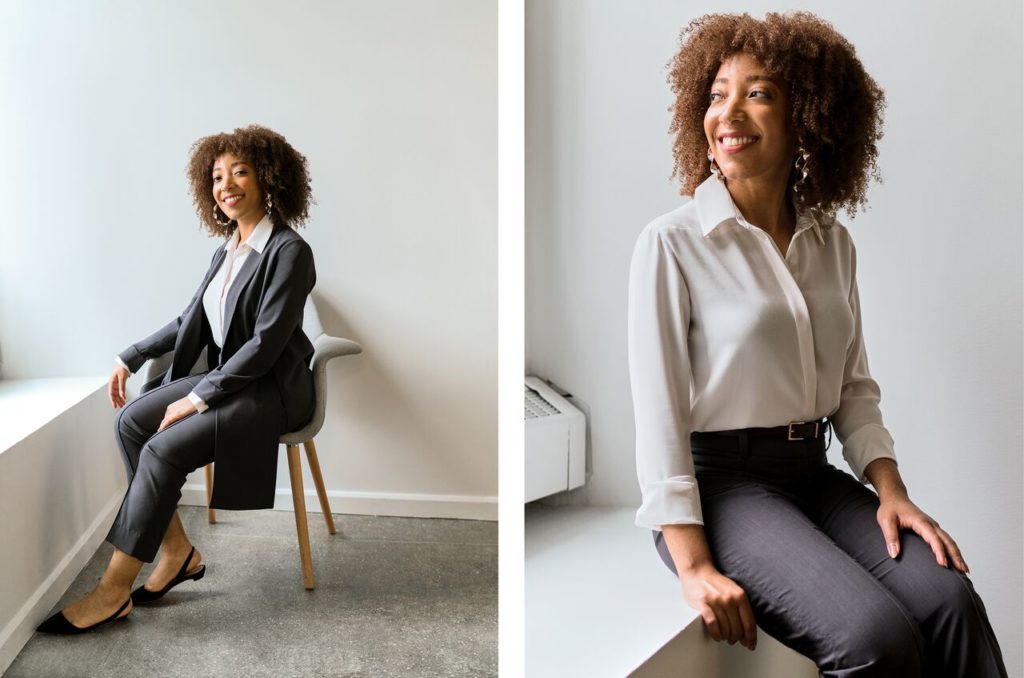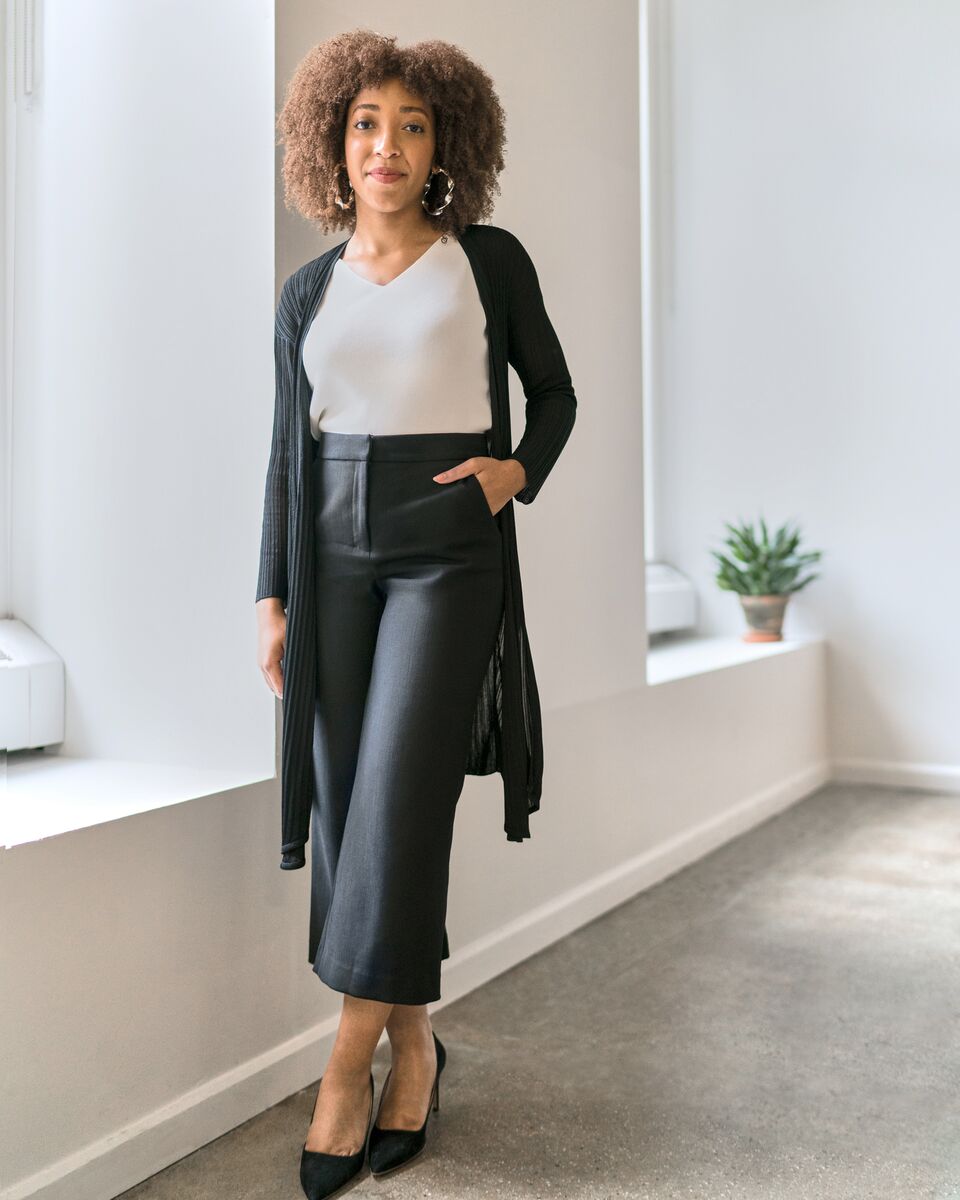On Separates, Strategic Volume, and Keeping an Open Mind: A Guide to Petite Dressing
June 15, 2018 | Filed in: Your Closet
MM stylist Audrey, who comes in at 5’2”, knows a thing or two about dressing both herself and her petite customers. Along the way, she’s developed a core philosophy about dressing for a petite frame—and encourages fellow petites to experiment with silhouettes and proportions that might not always be thought of as “petite-friendly.” Below, she shares her guidelines for petite style.
Though I’m 5’2”, I never identified as petite. I shopped outside of the petite section and embraced both long hemlines and oversized styles. I always dressed how I wanted to look and feel without regard for styling “rules”— so when I first joined the MM styling team, I had never thought about building a petite-specific professional wardrobe.
As I spent more time working with our customers, however, I realized that I had a privilege that I’d never identified before. Being both short and slim allowed me to more easily evade the label of “petite,” because my proportions are widely catered to by the fashion industry. However, body type, dimensions, and proportions widely vary within the petite category. When these aspects aren’t taken into consideration, the options available to petites can leave them worried about being “lost” in their clothes. Working with my petite customers got me thinking: How can I can better understand these women, so that I can help them make their own rules for petite dressing?
I started by identifying our similarities. First, many of us can accurately recite our measurements at any time—it’s a must for online shopping. Need my waist measurement? I can give you the regular one and the bloated one. Want to know my inseam? Please also take my low hip measurement and preferred pant rise in inches. Second, we’d rather not always have to go to the tailor—it’s time-consuming and doesn’t always create a perfect fit. And third, we’ve accepted that a lot of clothing is not made with us in mind.
Petite shoppers are often left wondering: Is the only option to stay within the confines of the petite-friendly section? And while I was happy to guide them to our petite-friendly styles, I also wanted to expand their horizons—so I developed a few core guideline for dressing a petite frame in MM.
1. When in doubt, stick with separates.

Shop similar styles: The Sant Ambroeus jardigan, Peggy top, Whitney skirt, Lillian pumps, and Amy earrings.
In my experience, dresses either work on me or they don’t—but separates are far more customizable, and can be worn and styled multiple ways. Our Noho skirt is a great example: it has just the right amount of stretch, so it’s adjustable to fit your proportions, and can be worn higher or lower on the waist—whichever way you think looks best on you. And while the Noho can be worn with a slim-fitting top, like the Peggy, it’s also flattering with a more loose-fitting silhouette (like the Didion).
2. Accept that clothes will look different on you than on the model.

Shop similar styles: The Kati jacket, Lagarde shirt, Mejia pants, Rowan flats, and Amy earrings.
While it’s true that clothes will look different on a six-foot-tall model than they do on a five-foot-tall person, different doesn’t necessarily mean unflattering. For instance, the Chester pants are designed to be cropped, but they also look beautiful when they hit at the ankle or lower. The Dietrich jacket may hit at the knee instead of mid-thigh for a petite customer, but wearing separates that highlight the waist offers a pleasing contrast to the longer length. The sleeves of the Lagarde shirt may need to be rolled, but they look just as put together as wearing them full-length. Don’t be afraid to challenge the design intention of a piece—if you like how it looks on your body, wear it.
3. Don’t avoid volume. Just be strategic about it.

Shop similar styles: The Molly cardigan, Peggy top, Marijane pant, Lillian pumps, and Amy earrings.
Culottes are great for petites, because unlike most pants, there’s no “correct” hem length. The tailored fit at the waist balances the wide-leg fit so that the volume isn’t overwhelming. The streamlined Peggy top contrasts with the width of the pants, and the ribbed Molly cardigan adds volume without hiding the body.
Before I developed these guidelines, petite customers would often start out by telling me all of the things that they couldn’t wear—but those restrictions eliminate so many other options that can work beautifully, if you’re thoughtful about proportions and volume, and willing to experiment a bit. Being petite is one thing to consider when you’re shopping, but it doesn’t have to be the only thing—and with these guidelines, petites can rest assured that they can try out new silhouettes without feeling lost in their clothes.
Photographs by Yan Ruan.





